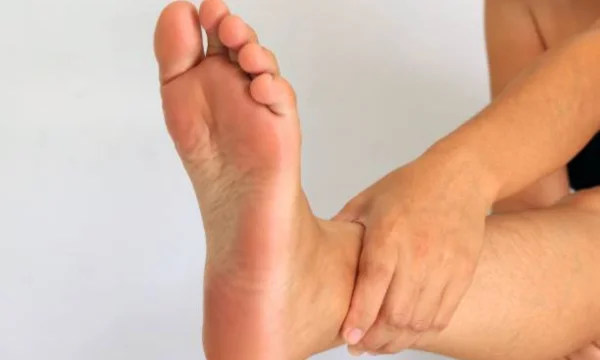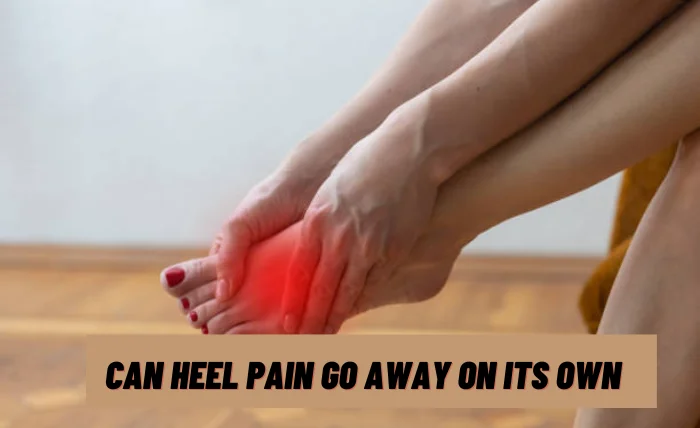Heel pain, a common discomfort many face, often leaves us wondering: can it disappear without intervention? This pressing question holds the key to understanding our body’s remarkable healing abilities. With the right knowledge and practices, there’s hope. Imagine stepping out of bed, free from that sharp morning ache, or walking seamlessly after a long day.
This article dives into the heart of heel pain, exploring its causes, natural healing prospects, and when to seek professional advice. Get ready for an enlightening journey towards pain-free steps, backed by credible insights. Say goodbye to fluff and hello to actionable, empowering information.
Can Heel Pain Go Away On Its Own Overview
Heel pain often comes from pushing our feet too hard. This can be due to long walks, running, or standing for hours. Our feet take the brunt of our weight and activities, leading to this pain.
Common Causes of Heel Pain
Two main culprits often cause heel pain: overuse and foot structure issues. Overuse happens when we do too much, too fast. Our feet need rest, just like the rest of our body. On the other hand, some of us have feet that make us more likely to get heel pain. This could be due to flat feet or high arches that put extra stress on our heels.
Plantar Fasciitis
This condition is a leading cause of heel pain. It happens when the thick band of tissue at the bottom of our foot gets inflamed. This band, the plantar fascia, supports our arch. When it gets overworked, pain follows. Rest, proper footwear, and stretches can help ease this pain.
Achilles Tendinitis
This type of heel pain affects the back of your heel. It involves the Achilles tendon, which connects our calf muscle to our heel bone. Overuse, especially from running or jumping, can inflame this tendon. Rest, ice, and gentle stretches can aid in recovery.
Can Heel Pain Go Away On Its Own?

In many cases, mild heel pain can indeed improve with self-care and rest. When we give our feet a break, we allow inflamed tissues to heal. For example, plantar fasciitis, a common source of heel pain, often gets better with proper rest, ice, and simple home exercises. It’s crucial, however, to start these self-care measures as soon as pain arises to prevent the condition from getting worse.
The Role of Self-Care
Self-care plays a key role in managing mild heel pain. Actions like resting your feet, applying ice to reduce swelling, and doing gentle stretches can make a big difference. Wearing supportive shoes that fit well also helps relieve pressure on your heels. These steps can soothe pain and speed up recovery, making it possible for heel pain to go away on its own over time.
Knowing When to Seek Help
While many mild cases of heel pain improve with self-care, it’s important to know when to get professional advice. If your heel pain persists despite self-care, gets worse, or starts affecting your daily activities, it’s time to see a doctor. Early professional evaluation and treatment can prevent the pain from becoming a chronic problem. A healthcare provider can offer tailored advice and treatments, such as physical therapy or orthotics, to address the underlying cause of your heel pain effectively.
The Role of Self-Care in Managing Heel Pain
Self-care is crucial when it comes to healing heel pain. Taking proactive steps at home can greatly reduce your recovery time and help prevent future issues.
Rest, Ice, Compression, and Elevation (RICE)
- Rest: Give your feet a break. Avoid activities that put extra stress on your heels.
- Ice: Apply ice to your heel for 15-20 minutes several times a day to reduce swelling.
- Compression: Use a compression bandage to provide support and reduce swelling.
- Elevation: Elevate your feet above your heart to decrease swelling.
This method helps manage pain and inflammation, speeding up the healing process.
Choosing the Right Footwear
Footwear significantly impacts heel pain. Shoes that support your foot’s natural arch and cushion your heel are best. Avoid flat or hard shoes that can increase pressure on your heel. Investing in good quality shoes can make a big difference in managing and preventing heel pain.
Stretching and Strengthening Exercises
Exercises that stretch and strengthen your foot, ankle, and calf muscles can support heel pain recovery. Gentle stretching of the Achilles tendon and plantar fascia can relieve pain. Strengthening exercises help stabilize your foot and ankle, reducing the risk of future pain. Consistent practice of these exercises can improve flexibility and support healing.
When to Seek Professional Help
Knowing when to seek help is key. If your heel pain lasts for more than a few weeks, gets worse, or stops you from doing daily tasks, it’s time to see a doctor. Other red flags include pain that’s present even when not standing or walking, swelling that doesn’t improve with rest, and any signs of infection like fever or redness.
Effectiveness of Professional Treatments
Professionals often recommend treatments based on the specific cause of your heel pain. Here’s how they can help:
- Orthotics: These are custom-made shoe inserts designed to support your foot’s natural shape. They can relieve pressure on your heel, correct alignment issues, and distribute your weight more evenly.
- MLS Laser Therapy: This is a non-invasive treatment that uses concentrated light energy to reduce inflammation, relieve pain, and promote tissue repair. It’s often used for conditions like plantar fasciitis and Achilles tendinitis.
- Custom Orthotics for Specific Conditions: For conditions like Sever’s disease and plantar fasciitis, custom orthotics can provide targeted support and cushioning. They are tailored to address the unique structural issues of your foot, offering more precise relief than over-the-counter options.
Combining these treatments with self-care strategies enhances their effectiveness, providing a comprehensive approach to healing heel pain. If you’re dealing with persistent heel pain, don’t wait to seek professional advice. Early intervention can prevent chronic issues and get you back to your favorite activities sooner.
Non-Invasive Treatments for Heel Pain
For those seeking relief beyond home remedies, several non-invasive treatments stand out:
- MLS Laser Therapy: This modern approach uses light energy to reduce inflammation, relieve pain, and promote tissue repair. It’s quick, painless, and can speed up the recovery process for conditions like plantar fasciitis.
- Steroid Injections: These injections can provide immediate relief from inflammation and pain. They’re typically used when other treatments haven’t worked, offering a temporary solution to manage severe discomfort.
- Custom Orthotics: Tailored to the specifics of your feet, custom orthotics provide support where it’s needed most. They can correct structural issues, distribute pressure evenly, and significantly reduce heel pain over time.
These treatments offer a path to relief without the need for surgical intervention, making them a preferred choice for many patients.
Myths Around Heel Spurs
There’s a common belief that heel spurs are the main cause of heel pain, but this isn’t always true. While heel spurs can cause discomfort, they’re often a symptom of another underlying issue, like plantar fasciitis. Many people with heel spurs experience no pain at all.
Bottom Line
We’ve explored its causes, self-care strategies, and when to seek professional help. While mild heel pain can often improve with rest and proper care, recognizing when to consult a healthcare provider is crucial.
With the right approach, including non-invasive treatments and debunking myths around heel spurs, managing heel pain becomes achievable. Ultimately, with informed care and timely intervention, “can heel pain go away on its own?” becomes a hopeful yes for many, leading to pain-free steps and a return to daily activities.

